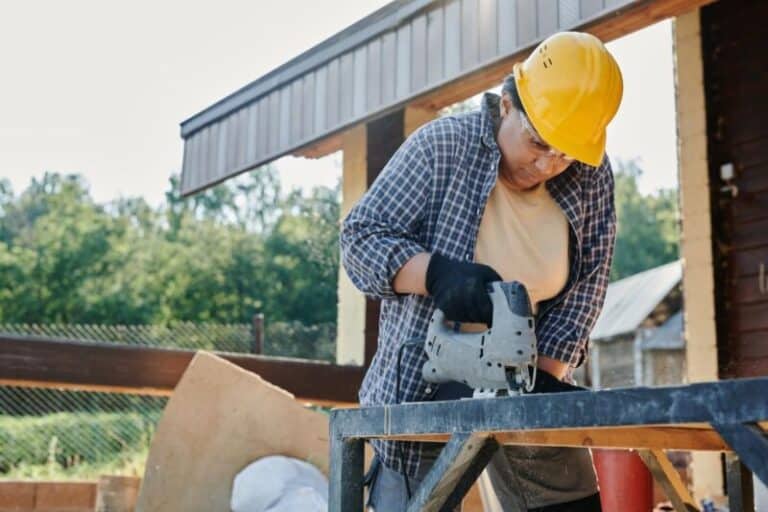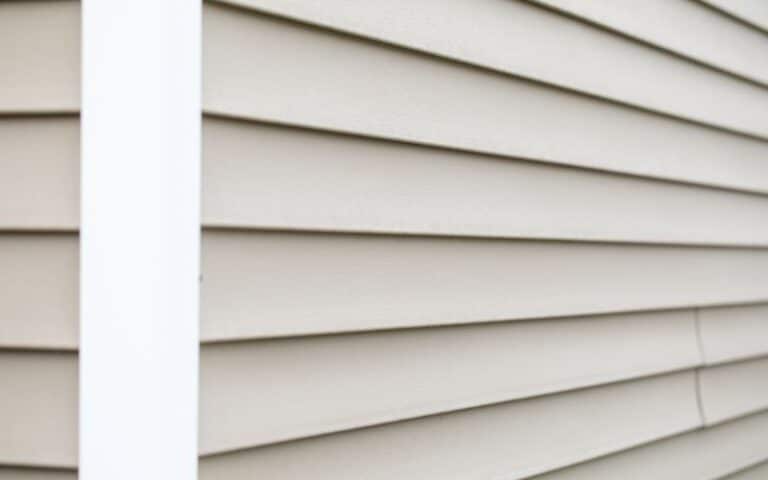The roof felt was introduced to stand as a barrier against wind-driven snow and rain to act as a water repellent during storms and heavy rainfall. Roof felt is a common underlayment material when installing a roof.
The waterproof quality highly recommends installing the roof for better protection against harsh weather conditions. Another benefit is that it also acts as a vapor-resistant underlayment.
Yes, roof felt can rot if the roof gets wet and the structural area under the roof does not have proper ventilation to allow it to dry out. The condensation of moisture causes mold and rot to be felt in the ceiling.
Ready for a Roofing Quiz?
What Happens If Roofing Felt Gets Wet?
Wet roofing felt will degrade in quality and purpose and eventually deteriorate if it gets too damp or stays wet for a long time.
Roof felt is waterproof and can withstand any weather, but if it is exposed to moisture for too long, the large amount of water can cause it to crack in the sun. It may even burst if it is still wet when the shingle is installed.
In addition, applying roof shingles to a wet sheath can trap moisture inside the roof, and the moisture content of the wood can cause it to mold and rot. It takes about 24 hours to dry after soaking.
However, there is nothing wrong with getting felt wet as it has water-repellent properties that keep it from getting wet, making the roof felt waterproof.
Furthermore, roofing Felt is designed with a shield-like mechanism to bounce off the water, protecting against leaks and wood rot.
In addition, you can shorten the lifespan of the felt roof if it rains while installing it. Therefore, it is ideal for installing felt so that it dries easily.
Moisture or warm moist air affects the roof when moisture impregnates the insulation, causing twisting and damage to the roof assembly. You will need to replace the ceiling felt at this point.
Warm moist air quickly enters the roof through gaps in the ceiling space and then mixes with the cool air in the ceiling to produce water droplets that condense on the roof felt. Condensed water can flow down the roof and create damp spots on the roof.
The solution is to prevent moist air from entering the roof space by improving ventilation and airflow into the roof to drive away any moist air. You should also avoid having gaps between your ceiling spaces.
It is essential to allow enough airflow in your roof space for your roof felt to maintain its quality. It helps the ceiling last longer and saves costs from repairing or replacing roof felts.
Repair doesn’t guarantee a long-lasting solution to roof rot; it is only a temporary maintenance solution.
Does My Roof Felt Need Replacement?
If your roof starts leaking after heavy rain, feel the need to replace it. A leaking roof felt is the first sign of a replacement.
If it also gets damaged, it will no longer provide proper protection and need to be replaced. Repair is only a short-term solution for a leak; it will not last.
Due to the action of sunlight, weather, and ultraviolet exposure over the years, the roof will wear out and become more susceptible to leaks and cracks. At this point, it is very crucial to replace the ceiling with felt.
The type of roof felt used will determine how long it will last and if replacement is needed.
Here are the types of roof underlayment if you consider a replacement.
#1. Roofing Felt
The roof felt underlayment is the most commonly us of underlayment, especially in homes. It is water-resistant, but it can still get wet and rot if the roof does not have proper airflow.
The heavier the roof felt, the stronger the resistance to damage. Felt is usually installed with staples in areas prone to damage from strong wind.
Plastic wind straps are also used on the sides to prevent bursting.
There are four types of roofing felt.
- High Water Vapor Resistant Roof Felt
- Low Water Vapor Resistant Roof Felt
- Air Tight Roof Felt
- Air Permeable Roof Felt.
The high water vapor resistant felt needs a lot of ventilation to dry appropriately. If there is no adequate roof space air, it can cause mold and rot.
#2. Synthetic Roof Underlayment
This synthetic roof underlayment is also water-resistant but can still get wet. However, it is vapor resistant and lighter than the roofing felt.
Synthetic underlayment is impregnated with asphalt, and fiberglass is added to make it more resistant to tear. In addition, it can withstand heavy-duty roofing as compared to roof felt underlayment.
#3. Rubberized Asphalt Underlayment
This rubberized asphalt underlayment is designed with a unique sticky back that forms a waterproof barrier between the underlayment and the roof deck.
Although it contains rubber polymers and a high percentage of asphalt, making it the most expensive type of underlayment you can buy, it is waterproof roofing material.
How Long Does Felt Last on a Roof?
Roof felt paper is expected to last between ten and twenty years, depending on the grade and quality. Synthetic asphalt roofing is likely to last between 20 and 30 years, while rubberized asphalt roofing is a new, improved look that lasts between 25 and 35 years.
However, extreme conditions can halve the lifespan. That’s why we can say that the lifetime of the felt roof is determined by the weather conditions and the type of roofing felt material.
It decreases more rapidly in extreme wet or cold climatic conditions than in hot climates. If exposed to excess water or moisture, it may deteriorate earlier than expected.
Tear strength is another issue that factors into the lifespan of the underlayment. Synthetic or rubber roofing is up to 35 times stronger and can withstand any conditions or weight of heavier duty roofing materials than a typical traditional asphalt roof.
It is advisable to install an ice and water shield to improve the lifespan of your roof. As it is sometimes called, Peel and stick are made from polymer-modified bitumen (also known as asphalt).
It is a waterproof underlayment covering developed to protect the roof from high wind-driven snow and rain damage.
Therefore, it is a better underlayment for areas where snowstorms or severe storms are expected.
The ice and water shield has an altered bitumen viscous surface covered by a film. The film is removed during installation so that the flexible cover sticks to the roof deck, and the end laps and side laps become waterproof.
In addition, the covering is designed to form a watertight seal around the nail entrance when applying roofing shingles.
Covering a roof with a lovely water shield can prevent leaks, even if the shingles have been blown off during strong wind conditions. This can prevent excessive damage and make it easier to repair the roof.
However, you should consider proper attic ventilation before covering the entire roof with an ice and water shield. This is because the converted bitumen back surface is continuous and can result in a vapor barrier.
Additionally, installing a roof over wet plywood is not recommended as it will weaken the installation, and the plywood will swell when exposed to moisture.
Therefore, it is advisable to allow the moisture content in plywood to dry correctly before installing the roof over it.
Conclusion
Lastly, roofing felts are very tough and protective but that doesn’t prevent them from getting damaged.
In addition, water is a significant problem for felts, especially during installation; moisture in roofing felts can shorten the lifespan of the underlayment.
Therefore, it is advisable to allow the roof to dry appropriately and allow adequate ventilation.






